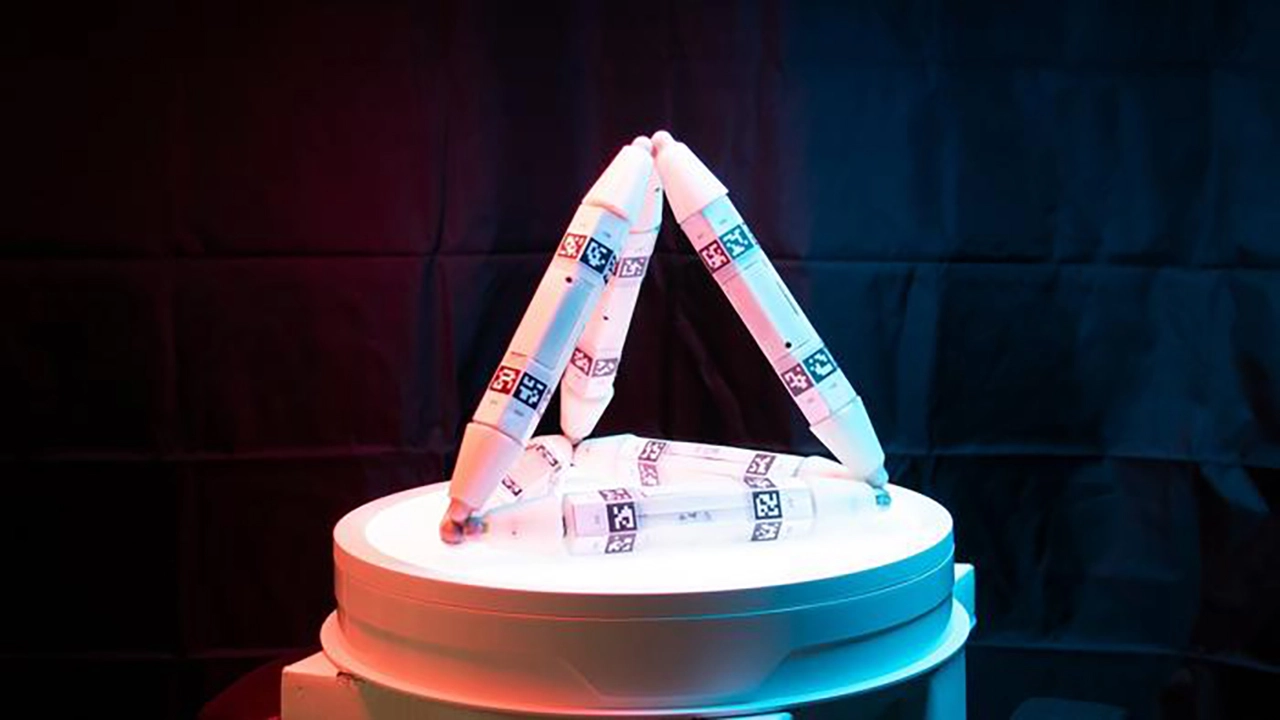
Image by Creative Machine Labs, from EurekAlert
Columbia Builds Robots That Grow by Consuming Other Robots
Columbia University scientists have developed an advanced robotic system mimic living organisms. These robots have the ability to grow, repair, and adapt by using materials from the environment, or even other robots.
In a rush? Here are the quick facts:
- The process is called “Robot Metabolism.”
- Truss Links are modular bars enabling self-assembly and adaptation.
- Robots improved speed by 66.5% by adding new parts.
The innovation, known as Robot Metabolism, allows machines to physically to transform, thus creating possibilities for autonomous robotics.
“True autonomy means robots must not only think for themselves but also physically sustain themselves,” Philippe Martin Wyder, lead author of the study, said in the study announcement. “Just as biological life absorbs and integrates resources, these robots grow, adapt, and repair using materials from their environment or from other robots.”
At the core of the project is the Truss Link, a magnetic, bar-shaped module inspired by children’s Geomag toys. The simple sticks connect freely to create expanding structural systems that generate increasingly complex robots with functional capabilities.
Researchers demonstrated in their study that these Truss Links can form two-dimensional shapes and then fold into 3D machines. In one test, a tetrahedron robot added a limb to improve its downhill speed by over 66.5%.
Hod Lipson, co-author and director of the Creative Machines Lab at Columbia, explained, “Robot minds have moved forward by leaps and bounds in the past decade through machine learning, but robot bodies are still monolithic, unadaptive, and unrecyclable.“
Lipson then added, “Biological bodies, in contrast, are all about adaptation – lifeforms, can grow, heal, and adapt. In large part, this ability stems from the modular nature of biology that can use and reuse modules (amino acids) from other lifeforms. Ultimately, we’ll have to get robots to do the same – to learn to use and reuse parts from other robots. You can think of this nascent field as a form of ‘machine metabolism.’”
The research suggests that future robots could one day build or upgrade themselves on the fly, which would make them suitable for disaster response, space exploration, as well as remote investigation areas with restricted human accessibility.
“Robot Metabolism provides a digital interface to the physical world and allows AI to not only advance cognitively, but physically,” Wyder added. “Ultimately, it opens up the potential for a world where AI can build physical structures or robots just as it today writes or rearranges the words in your email,” Wyder noted.
While the concept raises sci-fi concerns about self-replicating machines, Lipson is clear: “We can’t rely on humans to maintain these machines. Robots must ultimately learn to take care of themselves.”
But the field is still in its early stages and has major limitations. The current robot structures are simple, due to design and hardware constraints. Each Truss Link costs over $200 and lacks advanced sensors.
The robots are operator-controlled and cannot yet make decisions on their own. “This is a direct result of the still nascent stage of the field,” the team noted. Challenges like weight, expansion limits, and communication between modules remain.
The research establishes vital advancements toward the development of resilient, self-sustaining robots, which the team describes as robot ecology.


 Previous Story
Previous Story

 Latest articles
Latest articles 